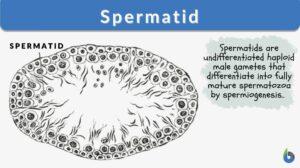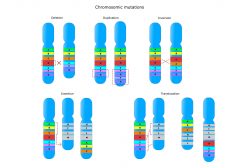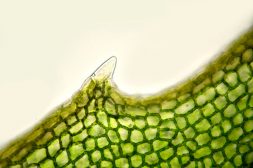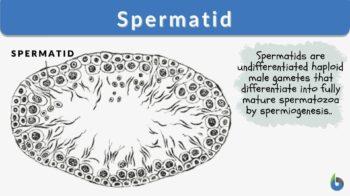
Spermatid
n., plural: spermatids
[ˈspɜːmətɪd]
Definition: any of the haploid cells formed by meiotic division of spermatocytes
Table of Contents
Spermatid Definition
What are spermatids? Let us define spermatid and understand its role in reproduction.
A spermatid is the haploid male sexual cell formed after meiosis from spermatocytes that eventually matures into a spermatozoon. Spermatogenesis is the formation of male sexual cells or sperms in the testis, the male reproductive organ. Spermatogonia, the stem cells in the testis, differentiate to form spermatocytes during spermatogenesis. Spermatocytes undergo meiotic divisions, consequently forming haploid spermatids. Spermatids are immature, undifferentiated haploid male gametes. The process of spermatogenesis and meiosis is initiated in males only at puberty.
The spermatogenesis occurs in the epithelial lining of a long and coiled tubular structure known as the seminiferous tubules. Germ cells (or spermatogonia) present the basal membrane of the seminiferous tubules undergo mitosis. Some of these cells though would undergo differentiation into primary spermatocytes.
Primary spermatocytes undergo the first meiotic prophase, wherein crossing over between homologous chromosomal pairs occurs. Crossing over phase is followed by cell division of the first phase of meiosis that results in the formation of two secondary spermatocytes containing 23 pairs of chromosomes (i.e., 22 pairs of homologous chromosomes and a pair of X or Y chromosomes).
The secondary spermatocytes then undergo meiotic division II, resulting in four haploid (i.e., contain 23 chromosomes) spermatids. These spermatids then undergo a maturation process to form sperms in the lumen of the seminiferous tubules (Figure 1). In humans, this whole process of conversion of spermatogonium to the mature sperm cells takes 65 days.
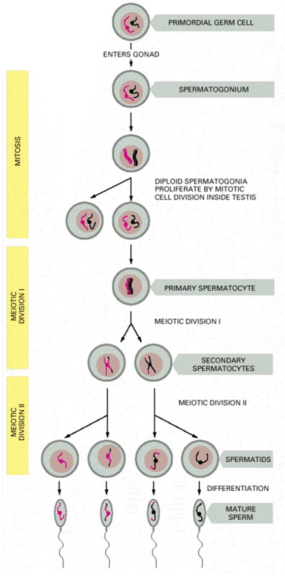
Or watch this vid about spermatogenesis…
A spermatid is any of the haploid cells formed by the meiotic division of spermatocytes. It develops into a spermatozoon after maturational events. The spermatids are found in the male gonads of sexually reproducing organisms. In humans, they are initially found in the seminiferous tubules of the testis and are later released from the Sertoli cells into the lumen to be transported into the epididymis where they will undergo the remaining maturational events to become fully motile, mature spermatozoa. The spermatids are the cells produced after spermatidogenesis. Then, spermatids develop and undergo spermiogenesis, giving rise to spermatozoa. See also: spermatogenesis, sperm cell.
Spermatid Structure
Spermatids are basically undifferentiated sex cells that differentiate and mature to form sperm cells. Unlike sperm cells, spermatids are non-motile and round in shape, with mitochondria present throughout spermatid cells along with all the cellular organelles.
Spermatids are located near the basal membrane in the epithelium of the seminiferous tubule. Spermatids are formed after meiosis, and hence they are considered to have nuclear maturity; however, they must undergo cellular maturation to form mature sperm cells. Initially, early spermatids are simple round cells; however, they quickly undergo a plethora of morphological changes.
During the maturation, the DNA of the late spermatids becomes highly condensed and elongated and gets placed itself into the head region. At this stage, late spermatids start to acquire an elongated shape and thus become elongated spermatids. The head region gets encased in a glycoprotein acrosome coat. Simultaneously, the cytoplasm acquires a whip-like tail-like structure enclosing tightly-packed mitochondria and a flagellum.
A significant change takes place in the nucleus during this process, the histone proteins are replaced by the protamines in the nucleus. Formation of protamines results in a complete shut down of the transcription process which is required for the final maturation of the spermatids to the sperms.
Protamines are small protein structures that are made up of arginine amino acids majorly. The process of maturation and differentiation of the spermatid cells into spermatozoa (sperm cells) is known as spermiogenesis. It is worthwhile to note that cell division do not occur during the process of spermiogenesis. Figure 2 below depicts the diagrammatic illustration that explains how spermatids become sperm cells?
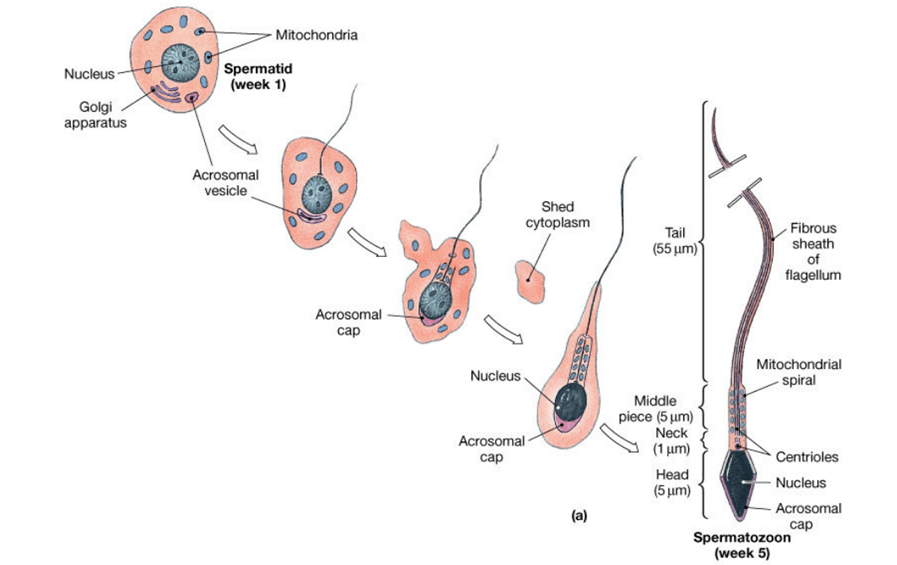
Now, let us understand how spermatids are different from sperms. See Table 1.
Table 1: Difference between spermatids and sperm cells | |
|---|---|
| Spermatids | Sperm cells |
| Immature, haploid male gamete cells formed from spermatocytes during spermatogenesis | Mature, haploid male gamete cells formed from spermatid cells during spermatogenesis |
| Not capable of undergoing fertilization process | Can undertake the process of fertilization |
| Located near the walls of the seminiferous tubules | Located in the middle or the lumen of the seminiferous tubules |
| Immature and undifferentiated round-shaped cells | Mature and differentiated elongated cells having a head and tail or flagella |
| Non-motile cells, no flagella | Motile cells with a flagella |
| Round cells with a large round-shaped nucleus | Elongated cells with a small elongated nucleus |
| Mitochondria are spread throughout the spermatid cell | Mitochondria are concerted near the flagella to provide energy for the motility of the sperm cell |
| Golgi apparatus is present and play an important role in the formation of acrosome | Golgi apparatus are absent |
| Centrioles are found near the nucleus | Centrioles act as the basal body for the flagella |
Spermatid Function
- Spermatids are the precursor cells that differentiate and mature into sperm cells
- Spermatids control and regulate the functioning of the Sertoli cells. Sertoli cells control the cell differentiation, cell division, and metabolism of the germs cells or the spermatogonia. Spermatids also control the cell secretions from the Sertoli cells. Sertoli cells nurture and protect the sperm cells and hence are a critical component of the male reproductive system.
- Spermatids undergo a transcription process to form protamines that replace the histone proteins. This is an essential step for the maturation of sperm cells.
- The formation of acrosome is a critical step for the functioning of the sperms that occurs in the spermatid stage. Spermatids have Golgi apparatus, an essential cellular structure required to form acrosomes.
DNA Repair
Maintaining the integrity of the genetic material or the DNA in the sperms is critical for producing normal sperms or male gametes. During mitosis, chromosomes are the most likely to undergo mutation or alteration in genetic material. Hence, the DNA repair process shuts down to avert the occurrence of alteration in the DNA and fusion of telomeres.
Try to answer the quiz below to check what you have learned so far about spermatids.
Further Reading
References
- Griswold, M. D. (2016). Spermatogenesis: The Commitment to Meiosis. Physiological reviews, 96(1), 1–17. https://doi.org/10.1152/physrev.00013.2015
- Dadoune, J. P. (1994). The cellular biology of mammalian spermatids: a review. Bulletin de l’Association des anatomistes, 78(243), 33–40.
- Gilbert, S. F. (2000). Developmental Biology. 6th edition. Sunderland (MA): Sinauer Associates; Spermatogenesis. Available from: https://www.ncbi.nlm.nih.gov/books/NBK10095/
- Alberts, B., Johnson, A., Lewis, J., et al. (2002). Molecular Biology of the Cell. 4th edition. New York: Garland Science; Sperm. Available from: https://www.ncbi.nlm.nih.gov/books/NBK26914/
- Gliki, G., Ebnet, K., Aurrand-Lions, M., Imhof, B. A., & Adams, R. H. (2004). Spermatid differentiation requires the assembly of a cell polarity complex downstream of junctional adhesion molecule-C. Nature, 431(7006), 320-324.
- Gunes, S., Al-Sadaan, M., & Agarwal, A. (2015). Spermatogenesis, DNA damage and DNA repair mechanisms in male infertility. Reproductive biomedicine online, 31(3), 309–319. https://doi.org/10.1016/j.rbmo.2015.06.010
©BiologyOnline.com. Content provided and moderated by Biology Online Editors.

